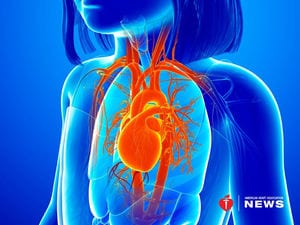
MONDAY, April 23, 2018 (American Heart Association) — Saving a child with heart disease whose heart has stopped requires a different approach than reviving a child with a healthy heart, according to a new scientific statement from the American Heart Association.
Cardiac arrest in the hospital is 10 times more common among children with congenital heart defects or other acquired heart conditions compared to children with healthy hearts, according to the statement published April 23 in the journal Circulation.
Each year, about 16,000 children in the United States have cardiac arrests outside the hospital and another 5,800 have cardiac arrests in the hospital. For children born with congenital or acquired heart disease, the specific cardiac condition itself may cause the heart to suddenly stop. In other cases, cardiac arrest may be a life-threatening complication after a surgical or catheter-based procedure.
“This statement gives us the first insights on resuscitating children with cardiac disease,” said Dr. Bradley Marino, a pediatric cardiac intensivist at Ann & Robert H. Lurie Children’s Hospital of Chicago, who chaired the statement’s writing group. It’s meant to be “an extremely powerful tool” for health care professionals to both improve survival in children with heart disease who have a cardiac arrest and prevent cardiac arrests in these high-risk children, he said.
CPR techniques and resuscitation medications developed for children with healthy hearts may be less effective in children with heart disease, according to the statement.
For example, which medications are most effective to improve blood flow during CPR for children with various forms of congenital and acquired heart conditions are not well understood, said Dr. Robert Berg, division chief of critical care medicine at The Children’s Hospital of Philadelphia, who was not involved in writing the statement.
“The plumbing within children who have congenital heart disease is often entirely different,” which can limit blood flow to the lungs or the rest of the body, he said.
The statement notes that a better understanding among health care providers of the anatomic and physiologic differences in children with high-risk pediatric cardiovascular diseases such as single ventricle congenital heart disease, cardiomyopathy and pulmonary hypertension may help prevent cardiac arrests. The statement also emphasizes that increased knowledge about the implications of the anatomic and physiologic differences on the effectiveness of CPR can improve survival.
Each section of the statement on the various types of congenital and acquired heart disease points out the unique challenges to CPR and the gaps where more research is needed, Marino said.
What is well established, though, is that for any child who has a cardiac arrest outside a hospital, someone should call 911 and then start CPR, Marino said.
“Whether kids have no heart disease or heart disease, parents and bystanders need to do basic life support,” he said.
Berg noted, however, that the vast majority of patients with cardiac arrests outside a hospital do not have congenital heart disease, so most emergency medicine providers have limited experience regarding resuscitation of such children. Therefore, having all this information in a single document can be “a godsend” for practitioners.
Although this statement provides important additional information for the “high-tech” advanced life support of infants and children with heart disease, the AHA’s existing CPR guidelines for infants and children still stand — compressions with rescue breaths. As the statement notes, no data suggest any modifications of basic life support for children with heart disease.
“Now that more children are surviving heart surgeries, the focus in the hospital should shift to helping them survive without complications such as brain damage from a cardiac arrest,” Marino said. That shift includes preventing cardiac arrests and improving the resuscitation when cardiac arrest occurs in these children.
“Preventing cardiac arrest is just as important as having a good operation,” he said.
For children who do have a cardiac arrest in the hospital, survival rates tripled over a decade, from 14 percent in 2000 to 43 percent in 2009, largely based on efforts to improve CPR.
“We’ve made great strides, but if we want to take the leap from 43 percent to a much higher number, we have to tailor our resuscitation strategies in children with heart disease,” Marino said.
The next step falls to researchers to see which strategies and treatments work best for these children, Berg said. “This statement gives us version 1.0 for resuscitating children with cardiac disease. When we get to version 3.0, I have confidence that outcomes will improve.”
